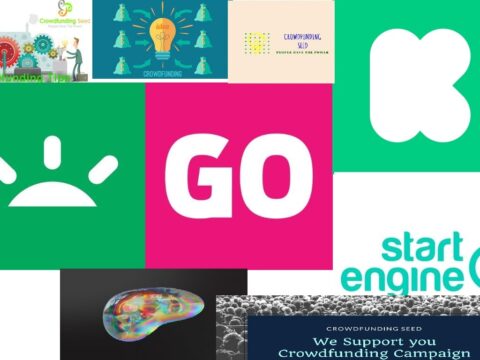Crowdfunding Articles, Crowdfunding Tips, News
Tips for a Successful Crowdfunding Campaign
Running a successful crowdfunding campaign takes a mix of strategy, storytelling, and hustle. Here’s a breakdown of practical tips to maximize your chances of hitting your goal:
- Nail Your Crowdfunding Story
People don’t just fund ideas—they back compelling narratives. Craft a clear, emotional pitch that explains why your project matters. Answer the big three: What are you doing? Why does it matter? Why should they care? Keep it concise but human—think less corporate jargon, more heartfelt hook. A short video (2-3 minutes) showing your face, your passion, and the “why” can double your success rate. Campaigns with videos often raise 100%+ more than those without. - Set a Realistic Goal
Crunch the numbers hard. Your funding target should cover what you need—production, shipping, fees (platforms like Kickstarter take 5%, plus 3-5% for payment processing)—but not scare off backers with an unreachable sum. Data shows campaigns asking for $10,000 or less succeed more often (around 50% success rate) than those aiming higher (drops to 20-30%). If you can, start small and let stretch goals build momentum later. - Build a Crowd Before You Launch
Don’t rely on strangers stumbling across your page. At least 30% of your funding should come in the first 48 hours to signal traction—platforms love this and boost visibility. Pre-launch, gather an email list (100-200 committed supporters is a solid start), hype it on social media, and tap personal networks. Friends, family, and early believers are your launch fuel. One study found campaigns with a strong Day 1 push are 85% more likely to succeed. - Offer Killer Rewards
Backers want value, not just goodwill. Design rewards that feel exclusive or irresistible—early-bird discounts (e.g., 25% off), limited-edition items, or personal shoutouts work well. Price tiers between $25-$100 tend to attract the most backers. Make sure fulfillment’s doable; shipping delays or miscalculations tank trust fast. Pro tip: include a low-cost digital reward (like a $5 PDF or thank-you note) to hook casual supporters. - Market Like Hell
Launch day isn’t the finish line—it’s the starting gun. Post daily updates (campaigns with 5+ updates raise 3x more than silent ones). Hit X, Instagram, TikTok—wherever your audience hangs out—with raw, authentic content: progress shots, setbacks, wins. Cross-promote with influencers or niche communities who’d vibe with your project (but vet them; fake followers waste time). If budget allows, targeted ads ($50-$100/day) can amplify reach, but organic hustle often beats paid spend. - Time It Right
Run your campaign for 30 days—long enough to build momentum, short enough to keep urgency. Avoid holiday seasons (Thanksgiving, December) when wallets are stretched thin. Tuesday launches statistically perform best; midweek gets more eyes than weekends. End on a high note—last 48 hours can pull 20% of total funds if you rally hard. - Engage Backers Like VIPs
Respond to every comment, question, and DM fast. Transparency builds trust—share how funds are used, admit hiccups, celebrate milestones. Post-launch, deliver on promises; 70% of failed repeat campaigns come from creators who ghosted or underdelivered.
Real-world example: The Pebble Watch smashed it in 2012 ($10M+ on Kickstarter) with a clear pitch (smartwatch for regular folks), tiered rewards ($99 early bird), and relentless updates. Contrast that with campaigns that flop—vague goals, no pre-buzz, or rewards that never ship. It’s less about luck, more about prep and grind. What’s your project? I can tailor this further if you’ve got specifics.




